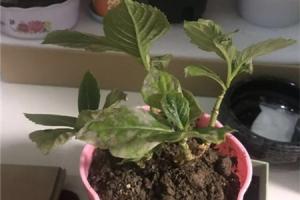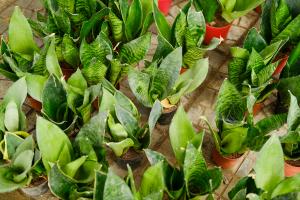How to Revive a Dead Tree Plant
Watching a tree that you’ve been nurturing for months or even years wither away can be disheartening. Sometimes, no matter how much you water or fertilize the plant, it refuses to perk up. But don’t give up just yet. Here are some steps you can take to revive a dead tree plant:
Step 1: Assess the Situation
Before you start trying to revive the tree, take a good look at it. If the tree is completely brown and brittle, it might be too late to revive it. However, if there are still some green leaves and flexible branches, the plant might still have some life within it.
If you're unsure about the plant's health status, gently scrape some bark off the branches or trunk with a knife. If the underneath is green, then there’s still hope. But if it’s brown and dry all the way through, then the tree is dead and cannot be saved.
Step 2: Determine the Cause of Illness
Once you've confirmed that the tree is not beyond saving, the next step is to figure out what caused it to die. The most common causes of dying plants include overwatering, underwatering, pests, and diseases.
Overwatering is one of the most prevalent issues that cause tree plants to die. Roots of a tree require air, and if they are consistently waterlogged, they will rot, which then leads to the death of the entire plant.
On the other hand, underwatering your tree plant can lead to similar symptoms as that of overwatering. The roots dry out and become brittle, causing damage to the entire plant.
Pests can also cause significant harm to your tree plant. Look for signs of borers, mites, or other insects that might be infesting the tree.
Lastly, diseases are another leading cause of dying tree plants. Fungal infections and viral diseases are rampant in plants; therefore, they should be caught early before they lead to the plant's demise.
Step 3: Address the Root Cause of the Problem
Once you've identified the problem, take measures to address it. For example, if you have been overwatering the plant, give it time to dry out, reduce watering, and improve the drainage around the tree.
On the other hand, if the tree is underwatered, gradually increase its water intake. Remember to do so slowly, to avoid waterlogging it, and make sure the soil around the plant is absorbing the water.
For pests, you can use insecticides to get rid of the intruders. Before using any insecticides, though, make sure you identify the pest correctly to avoid causing harm to beneficial insects that live in the tree.
Lastly, if your tree is suffering from a disease, make sure you identify what it is first. Fungal infections are common in plants, and they can be treated using fungicides. Prepare for viral infections, as they cannot be treated, and you may need to remove the whole tree to prevent the disease from spreading.
Step 4: Provide Extra Care
After addressing the cause of the problem, it's time to provide your plant with extra care. Give it a little TLC, and it may come back to life.
Start by pruning any dead or damaged branches. Doing this allows the plant to concentrate its energy on the surviving parts. While pruning all the dead branches might make the plant look terrible, it’s a sacrifice worth making to revive the rest of the plant.
Next, apply some natural fertilizer to the plant to encourage growth. Use a fertilizer that has sufficient nutrients and is gentle on the plant, as harsh fertilizers can cause more harm than good.
Finally, avoid transplanting the plant until you have confirmed that it's healthy again. Moving it too soon can cause more stress on a plant that is already struggling.
Conclusion
Reviving a dying tree plant is not always a straightforward process, but following these steps can help you try and save your plant. Remember to keep your tree plant in good condition by giving it adequate care, sufficient water and sunlight, and being vigilant against pests and diseases.
With persistence and patience, you may be able to bring your dying tree plant back to life and bring back the beauty it adds to your home or garden.

 how many times do yo...
how many times do yo... how many planted tre...
how many planted tre... how many pine trees ...
how many pine trees ... how many pecan trees...
how many pecan trees... how many plants comp...
how many plants comp... how many plants can ...
how many plants can ... how many plants and ...
how many plants and ... how many pepper plan...
how many pepper plan...































